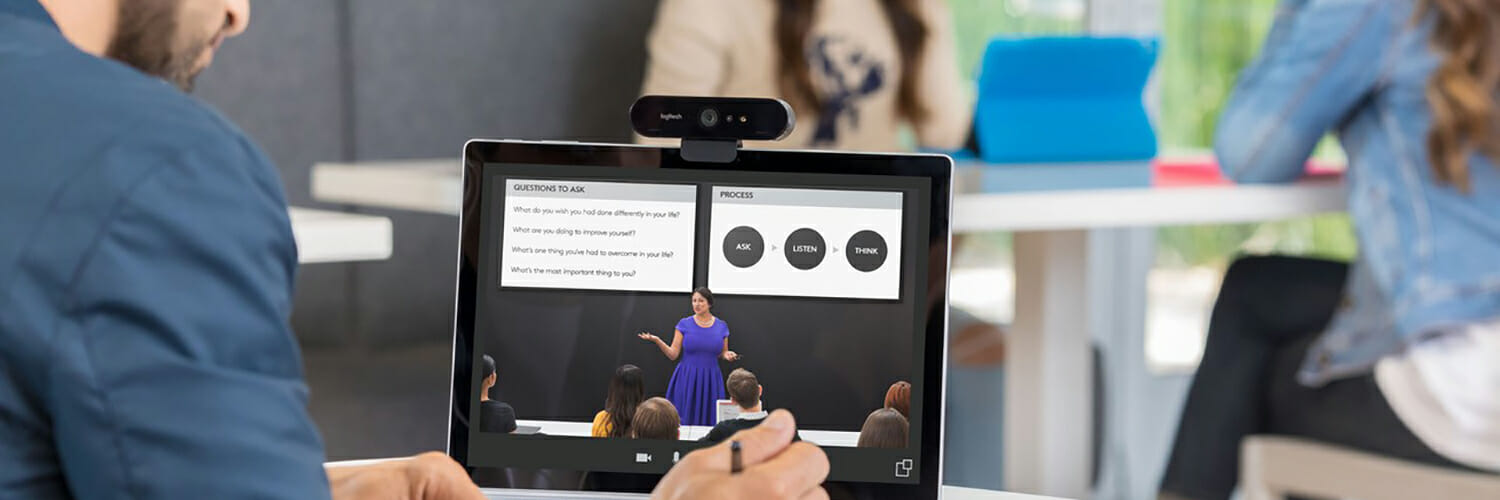BLOG
Watch and Learn
Opening our eyes to the future of higher education with video collaboration technology.
Universities and college campuses are due to reopen this fall. Thorough planning is underway to overcome the challenges brought about by the COVID-19 pandemic and ensure the safety of students and faculty on campus. While closed physically, many institutions have remained open virtually and digital education through video collaboration technology has allowed academics and students to continue to flourish in a remote teaching and learning environment.
Video collaboration is not new to higher education. For years it has been commonplace for lectures and classes to be recorded and made accessible to students online for study and revision. While the potential of video technology has existed for years–with companies such as Logitech leading the way with audio, video, recording, conferencing and collaboration solutions for the education sector–it had been primarily utilized to supplement face-to-face teaching. Plainly, it played the role of the sidekick to the hero of the physical lecture hall experience. That is, until COVID-19. When the brick-and-mortar campuses were shut down amid stay at home orders, our virtual varsities opened for business, unlocked by video technology.
There have been some truly creative uses of online video and collaboration technology in the past few months. Video has help to conduct, and frankly reinvigorate, traditional higher education events such as virtual graduations and commencements and virtual college visits. While complete reliance on virtual learning through video collaboration has been an adjustment to many, it has demonstrated a potential to continue to deliver quality learning long-term, far beyond the pandemic. The key is to harness the technology and utilize it as a unique learning tool that is as valuable and effective as in-person education.
Video collaboration opens education, providing accessibility for distance learning, wider access to educators and professionals outside the physical faculty (think guest lecturers) and more convenience for students and faculty with recorded (and pre-recorded) lectures. It enables more connection and a more personalized interaction and feedback between students and educators (constructive two-way dialogue on individual grades and work) and gives students more on-demand, practical training and real-life experience. More than that, it opens opportunities to support student wellness with virtual health and wellbeing sessions and guidance, especially for the more vulnerable or those more comfortable to seek help in a private setting.
Video collaboration also offers massive potential for higher education facilities. It is a way to engage a generation of highly video-literate students, raised in the age of YouTube, social media and FaceTime. Accepting virtual learning via video collaboration as a distinct way to teach and learn transcends barriers and allows for diversity, inclusivity and creativity in education–nurturing more of the brightest minds and possibilities this world has to offer.








